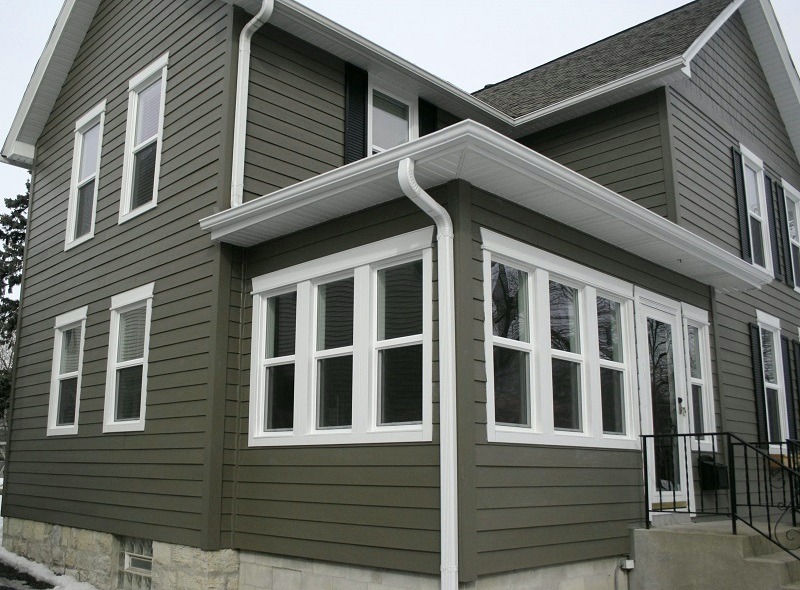How to Softwash Hardie Board Siding that Has Been Painted Using a Downstream Injector on a Pressure Washer with Chlorine and a Surfactant
How to Softwash Hardie Board Siding that Has Been Painted Using a Downstream Injector on a Pressure Washer with Chlorine and a Surfactant
BASIC HOME MAINTENANCEEXTERIOR CLEANING SERVICE PROCESSESCURB APPEALPRESSURE WASHING SERVICES


Introduction to Softwashing Hardie Board Siding
Softwashing is an increasingly preferred method for cleaning painted Hardie board siding due to its gentle but effective approach. Unlike traditional pressure washing, which can be too abrasive and potentially damage the paint and siding, softwashing employs a low-pressure application that effectively removes dirt, grime, mold, and mildew without the risks associated with high-pressure streams. This method not only preserves the integrity of the paint but also extends the lifespan of Hardie board siding.
A critical element of the softwashing process is the use of a downstream injector. This device allows for the precise mixing of chemicals, such as chlorine and surfactants, with water, delivering a balanced solution through the pressure washer. By using the downstream injector, delicate surfaces can be cleaned efficiently without high pressure, minimizing the risk of erosion or premature degradation of the siding.
Chlorine acts as a powerful cleaning agent in the softwashing process. Its disinfecting properties effectively eliminate mold, algae, and other organic growth that often plague exterior surfaces. When combined with a surfactant, chlorine's cleaning efficiency is significantly enhanced. Surfactants help break down the surface tension of water, allowing the cleaning solution to penetrate and lift away dirt and grime more effectively.
Correct pressure washer settings are also pivotal in the softwashing method. Maintaining a low-pressure output ensures that the cleaning solution is applied evenly across the surface without causing harm. The application pressure is typically set at a level sufficient to distribute the solution but gentle enough to preserve the paint and siding structure.
In summary, softwashing is a superior technique for maintaining the appearance and durability of painted Hardie board siding. By incorporating a downstream injector, adjustable pressure settings, and a mixture of chlorine and surfactants, homeowners can achieve a thorough, damage-free clean that enhances the beauty and longevity of their siding.
Setting Up Your Equipment and Cleaning Solution
Softwashing Hardie Board siding that has been painted requires meticulous setup of your pressure washer and careful preparation of the cleaning solution. The first step is to attach the downstream injector to your pressure washer. This attachment is crucial as it introduces the cleaning solution into the stream of water, allowing for an even distribution. Ensure that the downstream injector is tightly secured to prevent any leaks, which could lead to uneven cleaning or damage to the siding.
Next, it’s imperative to properly calibrate the pressure settings. Hardie Board siding, while durable, can be susceptible to damage if subjected to excessive pressure. Set your pressure washer to a low to moderate setting, typically around 500 to 800 PSI. This range is strong enough to remove dirt and grime without harming the painted surface of the siding. Always refer to the manufacturer’s guidelines for the ideal pressure settings to ensure optimal results.
Moving on to the preparation of the cleaning solution, a proper mixture is key for effective softwashing. Combine a solution proportionate to one part chlorine (typically sodium hypochlorite) to three parts water. The chlorine acts as a potent cleaning agent, breaking down mold, mildew, and other contaminants. Enhance the effectiveness of the solution by adding a high-quality surfactant, which helps to break the surface tension of the water, ensuring that the solution adheres more effectively to the siding. Follow the surfactant manufacturer's recommendations for the correct amount to use.
Safety should be a priority during the setup and cleaning process. Always wear appropriate protective gear, including gloves, goggles, and a respirator mask to protect yourself from harmful fumes. Additionally, ensure proper ventilation in the area being cleaned, to avoid inhaling concentrated vapors. By carefully following these setup and safety steps, you can achieve a thorough and safe cleaning of Hardie Board siding.
Executing the Softwashing Process
The softwashing process for Hardie board siding begins with a crucial pre-wetting step. This pre-wetting helps to prevent the cleaning solution from drying too quickly on the surface. Begin by thoroughly spraying the Hardie board siding with water using the pressure washer, ensuring that the entire area is uniformly damp but not overly saturated. This step sets the foundation for effective cleaning by maintaining moisture on the siding.
Next, prepare the chlorine and surfactant mixture for application. Using a downstream injector, draw the prepared cleaning solution into the pressure washer’s water stream. The mixture should be applied evenly across the Hardie board siding. Employ consistent movements to cover every section, ensuring comprehensive application without leaving untreated spots. The use of chlorine solutions must be handled carefully to avoid over-concentration, which could potentially damage the painted surfaces.
Reaching hard-to-access areas can be challenging. Utilizing appropriate extension wands and angled nozzles can facilitate better coverage on these parts. For particularly stubborn stains, allow the cleaning solution to dwell for a few minutes before proceeding. A soft-bristle brush can be employed for gentle scrubbing if needed, taking care not to damage the painted finish.
The rinsing step is critical to removing all traces of cleaning solution. Using a low-pressure setting on the pressure washer, rinse the Hardie board siding thoroughly from top to bottom. This method ensures that all residues are washed away effectively, preventing streaking and potential damage from leftover chemicals. Adequate rinsing is vital to maintain the appearance and longevity of the paint.
After rinsing, conduct a detailed post-cleaning inspection. Look for any areas that might have been missed or require additional cleaning. Examine the siding closely for any lingering stains or residues. Touch-up as necessary, ensuring the entire surface is clean and free of streaks or spots. Consistent and careful attention during each step of the softwashing process will result in a pristine and well-maintained Hardie board siding.
